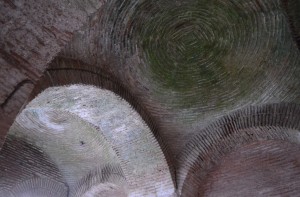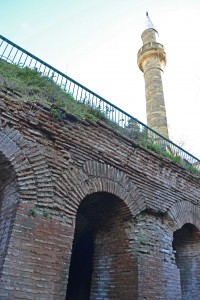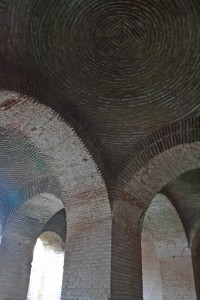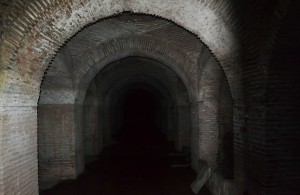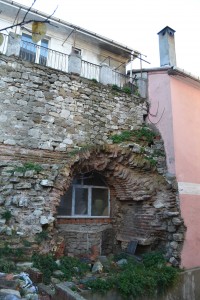Alexios Apokaukos was a big-hitter in the early 14th century world of Byzantine intrigue. He dragged himself up from anonymity and allied himself with the aristocratic John Kantakouzenos who managed to replace Andronikus II (old and intractable) with Andronikus III (young and pliable). Apokaukos was placed in charge of the treasury. Coincidentally, he became rich enough to start building churches. He was appointed archon (ruler) of Selymbria (now Silivri) in 1327 and had this church built.
When Andronikus III died, John Kantakouzenos ruled as regent. Alexios Apokaukos now joined forces with the opposing faction, led by the Patriarch. After a short period of treachery and subterfuge, the Civil War of 1341 – 1347, billed as Aristocracy (Kantakouzenos) versus the Common Man (Apokaukos) began. Kantakouzenos had himself declared emperor: the Patriarch and Apokaukos crowned their candidate immediately afterwards. Kantakouzenos came out on top but the empire was fatally wounded.
Alexios Apokaukos, despite being in charge of the navy, had allowed the Ottomans to cross the Sea of Marmara into Europe in an attempt to weaken the position of his rival. John VI Kantakouzenos had allied himself with the Ottomans in 1346 in his drive to eliminate his opposition. Sultan Orhan I, in an exquisite political statement, married Theodora (Kantakouzenos’s daughter) in Selymbria. The Ottomans now encircled Constantinople. It was only the attacks of Timur (Tamerlane) that prevented an earlier fall of Constantinople.
The Church of Alexios Apokaukos (41.071316, 28.243922) survives as a sturdy vault that was once a cistern. The brickwork is classic late Byzantine arch-and-dome construction and looks to be in fine condition. The brand new Fatih Camii and its older minaret now form the superstructure.
The cistern may be occasionally accessible but it’s a bit of a lottery. I arrived on a winter day in 2014 and began looking around. A woman in a house of Fatih Sokak pointed out a gap in the fence and said that I could either go in there or see if anyone in the mosque had a key. In the courtyard of the mosque, two men were making the most of the sun. They said that Cemal had the key but they didn’t know when he might return. There followed a small discussion during which we strolled over to the railing overlooking the cistern. One of the men jokingly suggested that I climb down. I took it as a challenge and made my way down below the vaulting. The men kept up a constant stream of banter.
A little while later, Cemal returned. He was not happy. He informed me loudly that this was a site of great antiquity, that I was trespassing and that the police would take me away. A crowd gathered. My two friends kept stifling laughter, which seemed to enrage Cemal. Eventually, I climbed out and over the fence. The entire neighborhood waved me off. Except Cemal.
The hilltop in the neighbourhood of Fatih bristles with Byzantine bits, probably the remains of Michael III’s 9th century fortress. Some of these constructions are still habitable.

Categories: Uncategorized | No Comments »
